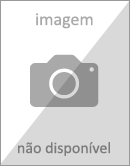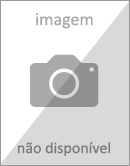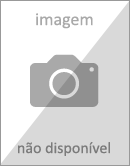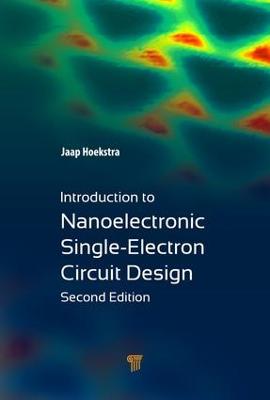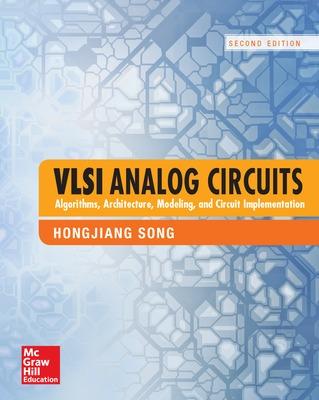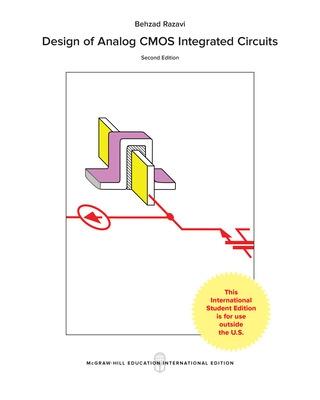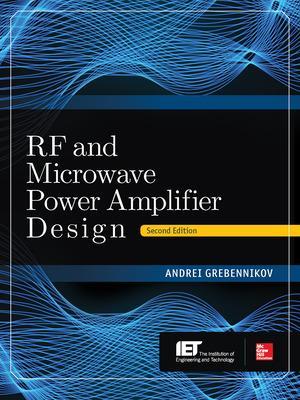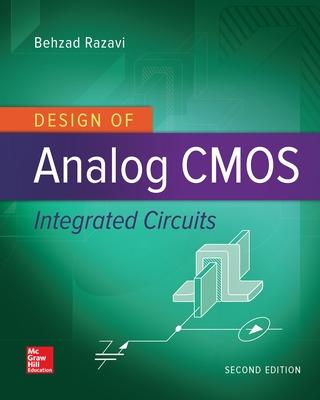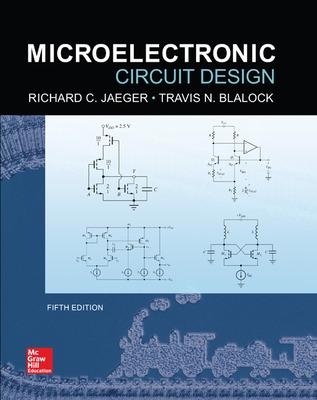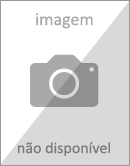Printed Circuits Handbook, Seventh Edition
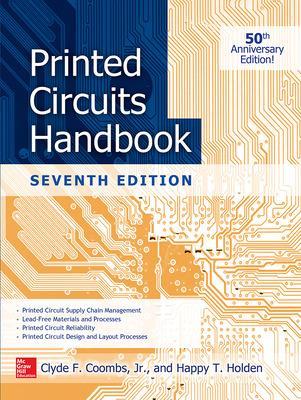 portes grátis
portes grátis
Printed Circuits Handbook, Seventh Edition
Coombs, Clyde; Holden, Happy
McGraw-Hill Education - Europe
12/2015
1648
Dura
Inglês
9780071833950
15 a 20 dias
2599
Chapter 1. Electronic Packaging and High-Density Interconnectivity Clyde F. Coombs, Jr., and Happy T. Holden 3
1.1 Introduction / 3
1.2 Measuring the Interconnectivity Revolution / 3
1.3 Hierarchy of Interconnections / 6
1.4 Factors Affecting Selection of Interconnections / 7
1.5 ICs and Packages / 9
1.6 Density Evaluations / 10
1.7 Methods to Increase PWB Density / 13
1.8 References / 18
Chapter 2. Types of Printed Wiring Boards Hayao Nakahara 19
2.1 Introduction / 19
2.2 Classification of Printed Wiring Boards / 19
2.3 Organic and Nonorganic Substrates / 21
2.4 Graphical and Discrete-Wire Boards / 21
2.5 Rigid and Flexible Boards / 22
2.6 Graphically Produced Boards / 22
2.7 Molded Interconnection Devices / 27
2.8 Plated-Through-Hole Technologies / 27
2.9 Summary / 30
2.10 References / 30
Part 2: Managing the Printed Circuit Supply Chain
Chapter 3. Basics of Printed Circuit Supply Chain Management Tim Rodgers 33
3.1 Introduction / 33
3.2 General Business Considerations / 34
3.3 Contract Manufacturers / 35
3.4 Criteria for Evaluating Suppliers / 35
3.5 Supplier Selection Criteria Example / 41
Chapter 4. Design for Manufacturability Tim Rodgers 43
4.1 General Principles / 43
4.2 PCB/PCA Pricing Models / 44
4.3 Process Cost Drivers / 49
4.4 Production Yield and Design for Manufacturability / 51
4.5 DFM Complexity Models / 59
Chapter 5. Manufacturing Information, Documentation, Formatting, and Exchange Happy T. Holden 63
5.1 Introduction / 63
5.2 Manufacturing Information / 64
5.3 Fabrication Information Exchange / 68
5.4 Data Exchange Formats / 73
5.5 Initial Design Review / 86
5.6 Design Input / 94
5.7 Design Analysis and Review / 99
5.8 Acknowledgments / 99
5.9 References / 100
Chapter 6. Supplier Selection and Qualification Tim Rodgers 101
6.1 Introduction / 101
6.2 Evaluating Suppliers / 102
6.3 Supplier Selection / 113
6.4 Supplier Qualification / 114
Chapter 7. Process Control, Monitoring, and Incoming Inspection Tim Rodgers 117
7.1 Introduction / 117
7.2 Process Capability and Process Control / 117
7.3 Process Monitoring and Troubleshooting / 122
7.4 Assessing a PCB Fabricators Capability / 122
7.5 Testing and Inspection / 156
7.6 Incoming Inspection / 158
Chapter 8. Product Acceptance and Feedback Tim Rodgers 159
8.1 Introduction / 159
8.2 Design Qualification / 159
8.3 Incoming Inspection and Lot Acceptance / 160
8.4 Supplier Performance Management / 162
8.5 Business Reviews / 165
8.6 Strategic Supplier Management / 167
Part 3: Materials
Chapter 9. Introduction to Base Materials Edward Kelley and Douglas Trobough 171
9.1 Introduction / 171
9.2 Grades and Specifications / 171
9.3 Properties Used to Classify Base Materials / 178
9.4 Types of FR-4 / 184
9.5 Laminate Identification Scheme / 185
9.6 Prepreg Identification Scheme / 186
9.7 Laminate and Prepreg Manufacturing Processes / 189
9.8 References / 195
Chapter 10. Base Material Components Edward Kelley and Douglas Trobough 197
10.1 Introduction / 197
10.2 Other Resin Systems / 201
10.3 Legislative Issues / 203
10.4 Additives / 207
10.5 Reinforcements / 209
10.6 Conductive Materials / 217
10.7 References / 224
Chapter 11. Properties of Base Materials Edward Kelley and Douglas Trobough 225
11.1 Introduction / 225
11.2 Thermal, Physical, and Mechanical Properties / 225
11.3 Electrical Properties / 236
11.4 Other Test Methods / 240
11.5 References / 240
Chapter 12. Base Material Performance in PCBs Edward Kelley and Douglas Trobough 241
12.1 Introduction / 241
12.2 Methods of Increasing Circuit Density / 241
12.3 Copper Foil / 242
12.4 Laminate Constructions / 247
12.5 Prepreg Options and Yield-per-Ply Values / 248
12.6 Dimensional Stability / 249
12.7 High-Density Interconnect/Microvia Materials / 250
12.8 Conductive Anodic Filament Growth / 252
12.9 Electrical Performance / 258
12.10 Electrical Performance of Lower Dk/Df Lead-Free Compatible Materials / 268
12.11 Resin and Glass Micro-Dk Effects / 268
12.12 References / 272
Chapter 13. The Impact of Lead-Free Assembly on Base Materials Edward Kelley and Douglas Trobough 273
13.1 Introduction / 273
13.2 RoHS Basics / 273
13.3 Base Material Compatibility Issues / 274
13.4 The Impact of Lead-Free Assembly on Base Material Components / 276
13.5 Critical Base Material Properties / 276
13.6 Impact on Printed Circuit Reliability and Material Selection / 288
13.7 Summary / 292
13.8 Further Reading / 292
Chapter 14. Selecting Base Materials Edward Kelley and Douglas Trobough 293
14.1 Introduction / 293
14.2 Selecting Materials for Thermal Reliability / 293
14.3 Selecting a Base Material for Thermal Reliability / 298
14.4 Selecting Materials for Electrical Performance / 304
14.5 CAF Resistance / 309
14.6 References / 315
Chapter 15. Laminate Qualification and Testing Michael Roesch and Sylvia Ehrler 317
15.1 Introduction / 317
15.2 Industry Standards / 318
15.3 Laminate Test Strategy / 319
15.4 Initial Tests / 321
15.5 Full Material Characterization / 324
15.6 Characterization Test Plan / 335
15.7 Manufacturability in the Shop / 337
Part 4: Engineering and Design
Chapter 16. Planning for Design, Fabrication, and Assembly Happy T. Holden 341
16.1 Introduction / 341
16.2 General Considerations / 342
16.3 New Product Design / 343
16.4 Specification: Capture of System Description / 346
16.5 Layout Trade-Off Planning / 349
16.6 PWB Fabrication Trade-Off Planning / 355
16.7 Assembly Trade-Off Planning / 362
16.8 References / 364
Chapter 17. Physical Characteristics of the PCB Lee W. Ritchey 365
17.1 Introduction / 365
17.2 Types of PCBs or Substrates / 366
17.3 Methods of Attaching Components / 369
17.4 Component Package Types / 369
17.5 Materials Choices / 371
17.6 Fabrication Methods / 372
Chapter 18. Electronic Design Automation and Printed Circuit Design Tools Andy Shaughnessy 373
18.1 Description of PCB Design Tools / 373
18.2 Using PCB Design Tools / 374
18.3 Major PCB Design Tools / 376
18.4 Lower-Cost PCB Design Tools / 378
18.5 Free PCB Design Tools / 379
18.6 Signal Integrity and EMC Tools / 381
18.7 Key Questions to Consider / 383
18.8 Further Reading / 383
Chapter 19. The PCB Design Process Lee W. Ritchey 385
19.1 Introduction / 385
19.2 The Virtual Prototyping Process / 387
19.3 Making the Conversion from Hardware Prototyping to Virtual Prototyping / 394
Chapter 20. Electrical and Mechanical Design Parameters Bill Hargin and Mark I. Montrose 395
20.1 Electrical and Mechanical Design Parameters Overview / 395
20.2 Introduction to Digital Signal Integrity / 396
20.3 Which Nets to Terminate and What Type of Termination to Use / 406
20.4 Introduction to Differential Signaling / 415
20.5 Introduction to Power Integrity / 419
20.6 Introduction to Electromagnetic Compatibility / 426
20.7 Introduction to Mechanical Design Requirements / 434
20.8 Types of Edge Mounting for Circuit Boards / 438
20.9 Acknowledgments / 441
20.10 References / 441
Chapter 21. The Basics of Printed Circuit Board Design Susy Webb 443
21.1 Software Selection / 443
21.2 Standards / 443
21.3 The Schematic / 445
21.4 Parts / 446
21.5 Padstacks / 448
21.6 Starting a New Board / 449
21.7 Placement / 453
21.8 Planes / 456
21.9 Stackup / 457
21.10 Routing / 458
21.11 Finishing / 464
21.12 Saving / 466
21.13 Conclusion / 466
Chapter 22. Current Carrying Capacity in Printed Circuits Mike Jouppi 469
22.1 Introduction / 469
22.2 Conductor (Trace) Sizing Charts / 470
22.3 Baseline Charts / 473
22.4 Summary / 480
22.5 References / 480
Chapter 23. PCB Design for Thermal Performance Mike Jouppi 481
23.1 Introduction / 481
23.2 The PCB as a Heat Sink Soldered to the Component / 482
23.3 Optimizing the PCB for Thermal Performance / 482
23.4 Conducting Heat to the Chassis / 490
23.5 PCB Requirements for High-Power Heat Sink Attach / 492
23.6 Modeling the Thermal Performance of the PCB / 493
23.7 Heat Sources / 496
23.8 Acknowledgment / 497
23.9 References / 497
Chapter 24. Embedded Components Vern Solberg 499
24.1 Introduction / 499
24.2 Definitions and Example / 499
24.3 Applications and Trade-Offs / 500
24.4 Designing for Embedded Component Applications / 501
24.5 Materials / 505
24.6 Material Supply Types / 509
24.7 Conclusion / 515
24.8 Acknowledgment / 515
Part: 5 High-Density Interconnection
Chapter 25. Introduction to High-Density Interconnection Technology Happy T. Holden 519
25.1 Introduction / 519
25.2 Definit
ions / 519
25.3 HDI Structures / 523
25.4 Design / 527
25.5 Dielectric Materials and Coating Methods / 529
25.6 HDI Manufacturing Processes / 541
25.7 Appendix / 549
25.8 References / 550
25.9 Further Reading / 550
Chapter 26. Advanced High-Density Interconnection Technologies Happy T. Holden 551
26.1 Introduction / 551
26.2 Definitions of HDI Process Factors / 551
26.3 HDI Fabrication Processes / 553
26.4 Next-Generation HDI Processes / 572
26.5 References / 578
26.6 Further Reading / 579
Part 6: Fabrication
Chapter 27. CAM Tooling for Fab and Assembly Happy T. Holden 583
27.1 Introduction / 583
27.2 Manufacturing Information / 583
27.3 Design Analysis and Review / 585
27.4 The CAM-Tooling Process / 586
27.5 Additional Processes / 597
27.6 Acknowledgments / 600
Chapter 28. Drilling Processes Matthias Stickel 601
28.1 Introduction / 601
28.2 Materials / 602
28.3 Machines / 608
28.4 Methods / 612
28.5 Hole Quality / 618
28.6 Troubleshooting / 619
28.7 Postdrilling Inspection / 621
28.8 Drilling Cost per Hole / 621
28.9 Acknowledgment / 624
Chapter 29. Precision Interconnect and Laser Drilling Matthias Stickel 625
29.1 Introduction / 625
29.2 Factors Affecting High-Density Drilling / 625
29.3 Laser versus Mechanical / 626
29.4 Factors Affecting High-Density Mechanical Drilling / 629
29.5 Depth-Controlled Drilling Methods / 633
29.6 Controlled Depth Via Drilling / 633
29.7 Innerlayer Registration of Multilayer Boards / 637
29.8 Laser Drilling / 637
29.9 Laser Via Formation / 639
29.10 Laser Tool Types / 639
29.11 Acknowledgment / 640
29.12 Further Reading / 640
Chapter 30. Imaging and Automated Optical Inspection Gareth Parry 641
30.1 Introduction / 641
30.2 Photosensitive Materials / 641
30.3 Dry-Film Resists / 644
30.4 Liquid Photoresists / 646
30.5 Electrophoretic Depositable Photoresists / 647
30.6 Resist Processing / 648
30.7 Design for Manufacturing / 665
30.8 Inkjet Imaging / 667
30.9 Automatic Optical Inspection / 668
30.10 References / 668
Chapter 31. Multilayer Materials and Processing C. D. (Don) Dupriest and Happy T. Holden 671
31.1 Introduction / 671
31.2 Multilayer Construction Types / 672
31.3 ML-PWB Processing and Flows / 690
31.4 Lamination Process / 697
31.5 Lamination Process Control and Troubleshooting / 704
31.6 Lamination Overview / 706
31.7 ML-PWB Summary / 707
31.8 Acknowledgment / 708
31.9 Further Reading / 708
Chapter 32. Preparing Boards for Plating Michael Carano 709
32.1 Introduction / 709
32.2 Process Decisions / 709
32.3 Process Feedwater / 711
32.4 Multilayer PTH Preprocessing / 713
32.5 Electroless Copper / 717
32.6 Acknowledgments / 719
32.7 References / 719
Chapter 33. Electroplating George Milad 721
33.1 Introduction / 721
33.2 Electroplating Basics / 721
33.3 Acid Copper Electroplating / 722
33.4 Tin Electroplating / 735
33.5 Nickel Electroplating / 736
33.6 Gold Electroplate / 739
Chapter 34. Direct Plating Hayao Nakahara 743
34.1 Direct Metallization Technology / 743
34.2 References / 753
Chapter 35. Printed Circuit Board Surface Finishes George Milad 755
35.1 Introduction / 755
35.2 PWB Surface Finishes / 757
35.3 Hot Air Solder Level / 758
35.4 Electroless Nickel Immersion Gold / 758
35.5 Nickel Palladium Gold / 761
35.6 Organic Solderability Preservatives / 763
35.7 Immersion Silver / 765
35.8 Immersion Tin / 766
35.9 Other Surface Finishes / 767
Chapter 36. Solder Mask David A. Vaughan 771
36.1 Introduction / 771
36.2 Trends and Challenges for Solder Mask / 772
36.3 Types of Solder Mask / 773
36.4 Solder Mask Selection / 774
36.5 Solder Mask Application and Processing / 778
36.6 Via Protection / 785
36.7 Solder Mask Final Properties / 786
36.8 Legend and Marking (Nomenclature) / 787
Chapter 37. Etching Process and Technologies Gareth Parry 789
37.1 Introduction / 789
37.2 General Etching Considerations and Procedures / 790
37.3 Resist Removal / 792
37.4 Etching Solutions / 793
37.5 Other Materials for Board Construction / 804
37.6 Metals Other than Copper / 805
37.7 Basics of Etched Line Formation / 806
37.8 Equipment and Techniques / 811
37.9 Acknowledgment / 814
37.10 References / 814
Chapter 38. Routing and V-Scoring Matthias Stickel 817
38.1 Introduction / 817
38.2 The Routing Operation / 817
38.3 Materials / 821
38.4 Machines / 822
38.5 Routers / 824
38.6 Parameters / 825
38.7 Depth Controlled Routing / 827
38.8 V-Scoring / 828
38.9 References / 831
Part 7: Bare Board Test
Chapter 39. Bare Board Test Objectives and Definitions David J. Wilkie 835
39.1 Introduction / 835
39.2 The Impact of HDI / 835
39.3 Why Test? / 836
39.4 Circuit Board Faults / 838
Chapter 40. Bare Board Test Methods David J. Wilkie 841
40.1 Introduction / 841
40.2 Nonelectrical Testing Methods / 841
40.3 Basic Electrical Testing Methods / 842
40.4 Specialized Electrical Testing Methods / 848
40.5 Data and Fixture Preparation / 851
40.6 Combined Testing Methods / 857
Chapter 41. Bare Board Test Equipment David J. Wilkie 859
41.1 Introduction / 859
41.2 System Alternatives / 859
41.3 Universal Grid Systems / 861
41.4 Flying-Probe/Moving-Probe Test Systems / 872
41.5 Verification and Repair / 876
41.6 Test Department Planning and Management / 876
Chapter 42. HDI Bare Board Special Testing Methods David J. Wilkie 879
42.1 Introduction / 879
42.2 Fine-Pitch Tilt-Pin Fixtures / 880
42.3 Bending Beam Fixtures / 880
42.4 Flying Probe / 881
42.5 Coupled Plate / 881
42.6 Shorting Plate / 881
42.7 Conductive Rubber Fixtures / 882
42.8 Optical Inspection / 882
42.9 Noncontact Test Methods / 882
42.10 Combinational Test Methods / 884
Part 8: Assembly, Soldering Materials, and Processes
Chapter 43. Assembly Processes Happy T. Holden 887
43.1 Introduction / 887
43.2 Through-Hole Technology / 889
43.3 Surface-Mount Technology / 899
43.4 Odd-Form Component Assembly / 923
43.5 Process Equipment Selection / 930
43.6 Conformal Coating, Encapsulation, and Underfill Materials / 933
43.7 Acknowledgments / 934
Chapter 44. Conformal Coating Jason Keeping 935
44.1 Introduction / 935
44.2 Types of Conformal Coatings / 936
44.3 Product Preparation / 940
44.4 Application Processes / 946
44.5 Cure, Inspection, and Demasking / 949
44.6 Repair Methods / 951
44.7 Design for Conformal Coating / 952
44.8 References / 955
Chapter 45. Fluxes and Cleaning Gregory C. Munie and Laura J. Turbini 957
45.1 Introduction / 957
45.2 Assembly Process / 958
45.3 Surface Finishes / 959
45.4 Soldering Flux / 960
45.5 Flux Form versus Soldering Process / 961
45.6 Rosin Flux / 962
45.7 Water-Soluble Flux / 963
45.8 Low Solids Flux / 964
45.9 Cleaning Issues / 965
45.10 Summary / 967
45.11 References / 967
Chapter 46. Soldering Fundamentals Gary M. Freedman 969
46.1 Introduction / 969
46.2 Elements of a Solder Joint / 970
46.3 Solder Overview / 971
46.4 Soldering Basics / 971
46.5 References / 975
Chapter 47. Soldering Materials and Metallurgy Gary M. Freedman 977
47.1 Introduction / 977
47.2 Solders / 978
47.3 Solder Alloys and Corrosion / 980
47.4 Pb-Free Solders: Alternatives and Implications / 980
47.5 Board Surface Finishes / 986
47.6 References / 994
Chapter 48. Solder Fluxes Gary M. Freedman 997
48.1 Introduction to Fluxes / 997
48.2 Flux Functions / 997
48.3 Flux Delivery Methods / 999
48.4 Flux Activity and Attributes / 999
48.5 Flux: Ideal versus Reality / 1000
48.6 Flux Types / 1000
48.7 Soldering Atmospheres / 1009
48.8 References / 1012
Chapter 49. Soldering Techniques Gary M. Freedman 1015
49.1 Introduction / 1015
49.2 Mass Soldering Methods / 1015
49.3 Oven Reflow Soldering / 1015
49.4 Wave Soldering / 1039
49.5 Wave Solder Defects / 1054
49.6 Vapor-Phase Reflow Soldering / 1055
49.7 Laser Reflow Soldering / 1057
49.8 Hot-Bar Soldering / 1064
49.9 Hot-Gas Soldering / 1069
49.10 Ultrasonic Soldering / 1071
49.11 References / 1072
Chapter 50. Soldering Repair and Rework Gary M. Freedman 1075
50.1 Introduction / 1075
50.2 Hot-Gas Repair / 1075
50.3 Manual Solder Fountain / 1080
50.4 Automated Solder Fountain (Single-Point Soldering) / 1080
50.5 Laser / 1080
50.6 Considerations for Repair / 1081
50.7 Reference / 1082
Part 9: Nonsolder Interconnection
Chapter 51. Press-Fit Interconnection Gary M. Freedman 1085
51.1 Introduction / 1085
51.2 The Rise of Press-Fit Technology / 1086
51.3 Compliant Pin Configurations / 1086
51.4 Press-Fit Considerations / 1089
51.5 Press-Fit Pin M
aterials / 1089
51.6 Surface Finishes and Effects / 1090
51.7 Equipment / 1093
51.8 Assembly Process / 1093
51.9 Rework for Press-Fit Connectors / 1096
51.10 PCB Design and Board Procurement Tips / 1098
51.11 Press-Fit Process Tips / 1099
51.12 Further Reading / 1101
Chapter 52. Pressure-Interconnect Land Grid Array Systems Gary M. Freedman 1103
52.1 Introduction / 1103
52.2 LGA and the Environment / 1103
52.3 Elements of the LGA System / 1103
52.4 Assembly / 1107
52.5 PCA Rework / 1109
52.6 Design Guidelines / 1110
52.7 Reference / 1110
Part 10: Quality
Chapter 53. Acceptability and Quality of Fabricated Boards Robert (Bob) Neves 1113
53.1 Introduction / 1113
53.2 Specific Quality and Acceptability Criteria by PCB Type / 1114
53.3 Methods for Verification of Acceptability / 1115
53.4 Inspection Lot Formation / 1116
53.5 Inspections Categories / 1117
53.6 Acceptability and Quality After Simulated Solder Cycle(s) / 1118
53.7 Nonconforming PCBs and Material Review Board Function / 1120
53.8 The Cost of the Assembled PCB / 1120
53.9 How to Develop Acceptability and Quality Criteria / 1121
53.10 Class of Service / 1122
53.11 Inspection Criteria / 1123
53.12 Reliability Inspection Using Accelerated Environmental Exposure / 1142
Chapter 54. Acceptability of Printed Circuit Board Assemblies Mel Parrish 1145
54.1 Understanding Customer Requirements / 1145
54.2 Handling to Protect the PCBA / 1150
54.3 PCBA Hardware Acceptability Considerations / 1153
54.4 Component Installation or Placement Requirements / 1158
54.5 Component and PCB Solderability Requirements / 1166
54.6 Solder-Related Defects / 1166
54.7 PCBA Laminate Condition, Cleanliness, and Marking Requirements / 1171
54.8 PCBA Coatings / 1174
54.9 Solderless Wrapping of Wire to Posts (Wire Wrap) / 1175
54.10 PCBA Modifications / 1176
54.11 References / 1178
Chapter 55. Asssembly Inspection Stacy Kalisz Johnson and Stig Oresjo 1179
55.1 Introduction / 1179
55.2 Definition of Defects, Faults, Process Indicators, and Potential Defects / 1181
55.3 Reasons for Inspection / 1182
55.4 Lead-Free Impact on Inspection / 1184
55.5 Miniaturization and Higher Complexity / 1185
55.6 Visual Inspection / 1186
55.7 Automated Inspection / 1189
55.8 Three-Dimensional Automated Solder Paste Inspection / 1191
55.9 Pre-Reflow AOI / 1193
55.10 Post-Reflow Automated Inspection / 1194
55.11 Implementation of Inspection Systems / 1199
55.12 Design Implications of Inspection Systems / 1200
55.13 References / 1201
Chapter 56. Design for Testing Kenneth P. Parker 1203
56.1 Introduction / 1203
56.2 Definitions / 1204
56.3 Ad Hoc Design for Testability / 1204
56.4 Structured Design for Testability / 1206
56.5 Standards-Based Testing / 1207
56.6 References / 1213
Chapter 57. Loaded Board Testing Kenneth P. Parker 1215
57.1 Introduction / 1215
57.2 The Process of Test / 1216
57.3 Definitions / 1217
57.4 Testing Approaches / 1221
57.5 In-Circuit Test Techniques / 1224
57.6 Alternatives to Conventional Electrical Tests / 1229
57.7 Tester Comparison / 1232
57.8 References / 1232
Chapter 58. Failure Modes and Effects Analysis Happy T. Holden 1233
58.1 Prognostics and Health Management / 1233
58.2 Theory / 1235
58.3 What Is Process FMEA? / 1241
58.4 Reference / 1244
58.5 Further Reading / 1244
Part 11: Reliability
Chapter 59. Conductive Anodic Filament Formation Laura J. Turbini and Antonio Caputo 1247
59.1 Introduction / 1247
59.2 Electrochemical Migration / 1247
59.3 Developing a Quantitative Copper Corrosion Test / 1249
59.4 Understanding CAF Formation / 1256
59.5 Factors That Affect CAF Formation / 1260
59.6 Test Method for CAF-Resistant Materials / 1266
59.7 Manufacturing Tolerance Considerations / 1267
59.8 References / 1267
Chapter 60. Reliability of Printed Circuit Boards Reza Ghaffarian 1271
60.1 Introduction / 1271
60.2 PCB and Microelectronics Trends and Reliability / 1272
60.3 PCB Fabrication and Failure Mechanisms / 1283
60.4 PTH Thermal Cycle Reliability and Projections Methods / 1294
60.5 Acknowledgments / 1322
60.6 References / 1322
60.7 Further Reading / 1325
Chapter 61. Reliability of Microvia Printed Circuit Boards Reza Ghaffarian 1327
61.1 Microvia Fabrication / 1327
61.2 Summary / 1342
61.3 List of Acronyms / 1342
61.4 Acknowledgments / 1345
61.5 References / 1345
61.6 Further Reading / 1346
Chapter 62. Component-to-PWB Reliability: The Impact of Design Variables and Lead Free Mudasir Ahmad and Mark Brillhart 1347
62.1 Introduction / 1347
62.2 Packaging Challenges / 1348
62.3 Variables That Impact Reliability / 1351
62.4 References / 1373
Chapter 63. Lead-Free Solder Joint Reliability: Fundamentals and Design-for-Reliability Rules Jean-Paul Clech 1375
63.1 Introduction / 1375
63.2 Reliability Definition and Goals / 1376
63.3 Why Do Solder Joints Fail? / 1377
63.4 Main Effects and Basic Rules-of-Thumb / 1378
63.5 Parameters That Affect Solder Joint Reliability Under Thermal Cycling Conditions / 1384
63.6 Significance of Board Parameter Effects / 1387
63.7 Lead-Free Reliability Trends / 1393
63.8 Conclusions / 1397
63.9 Further Reading / 1397
Chapter 64. Component-to-PWB Reliability: Estimating Solder Joint Reliability and the Impact of Lead-Free Solders Mudasir Ahmad and Mark Brillhart 1401
64.1 Introduction / 1401
64.2 Thermomechanical Reliability / 1403
64.3 Mechanical Reliability / 1418
64.4 Finite Element Analysis / 1425
64.5 References / 1432
Part 12: Flexible Circuits
Chapter 65. Flexible Circuit Applications and Materials Happy T. Holden 1439
65.1 Introduction to Flexible Circuits / 1439
65.2 Applications of Flexible Circuits / 1441
65.3 High-Density Flexible Circuits / 1442
65.4 Materials for Flexible Circuits / 1443
65.5 Substrate Material Properties / 1445
65.6 Conductor Materials / 1459
65.7 Copper-Clad Laminates / 1460
65.8 Coverlay Materials / 1464
65.9 Stiffener Materials / 1469
65.10 Adhesive Materials / 1469
65.11 Restriction of Hazardous Substances Issues / 1470
65.12 Acknowledgments / 1470
Chapter 66. Design of Flexible Circuits Happy T. Holden 1471
66.1 Introduction / 1471
66.2 Types of Flexible Circuits / 1472
66.3 Multilayer Rigid Flex (Multilayer Flex) / 1478
66.4 Circuit Designs for Flexibility / 1480
66.5 Electrical Design of the Circuits / 1485
66.6 Design of Flexible Printed Wiring with Transmission Line Properties / 1490
66.7 Circuit Designs for Higher Reliability / 1500
66.8 Acknowledgments / 1502
Chapter 67. Manufacturing Flexible Circuits Joseph Fjelstad 1503
67.1 Introduction / 1503
67.2 Fundamental Flex Circuit Processing Steps / 1504
67.3 Equipment for Wet Processing of Flexible Materials / 1507
67.4 Coverlayer/Cover-Coating Methods / 1509
67.5 Interconnection Surface Treatments / 1516
67.6 Depanelization of Flexible Circuits / 1517
67.7 Stiffener Processes / 1519
67.8 Packaging for Flex / 1520
67.9 High-Density Flexible Circuit Manufacturing / 1520
67.10 Acknowledgments / 1529
Chapter 68. Termination Options for Flexible Circuits Joseph Fjelstad 1531
68.1 Introduction / 1531
68.2 Wirebonding Technology / 1533
68.3 Solutions Where the Flex Circuit Is Half of the Mated Pair / 1536
68.4 Summary / 1541
68.5 Acknowledgments / 1541
Chapter 69. Multilayer Flex and Rigid Flex Joseph Fjelstad 1543
69.1 Introduction / 1543
69.2 Multilayer Flex versus Rigid Flex / 1543
69.3 Aluminum Rigid Flex Circuit-Prospective Structure for the Future / 1550
69.4 Summary / 1554
69.5 Acknowledgments / 1555
Chapter 70. Special Constructions of Flexible Circuits Dominique K. Numakura 1557
70.1 Introduction / 1557
70.2 Flying-Lead Construction / 1557
70.3 Tape Automated Bonding / 1564
70.4 Microbump Arrays / 1566
70.5 Thick-Film Conductor Flex Circuits / 1568
70.6 Shielding of the Flexible Cables / 1569
70.7 Functional Flexible Circuits / 1570
Chapter 71. Flexible Circuit Quality Assurance: Principles and Practices Joseph Fjelstad 1573
71.1 Introduction / 1573
71.2 Basic Concepts in Flexible Circuit Quality Assurance / 1574
71.3 Raw Material Testing / 1575
71.4 Electrical Performance Tests / 1576
71.5 General Testing Requirements for Flexible Circuit Materials / 1577
71.6 Flexible Circuit Visual Evaluation / 1577
71.7 Flexible Circuit Dimensional Requirements / 1578
71.8 Physical Testing Requirements for Flexible Circuits / 1579
71.9 Electrical Requirements for Flexible Circuits / 1581
71.10 Environmental Resistance Requirements / 1582
71.11 Solderability Requirements / 1582
71.12 Standards and Specifications for Flexible Circuits / 1582
71.13 Summary / 1584
71.14 Acknowledgments / 1584
Appendix: Summary of Key Component, Material, Process, and Design Standards Marc Carter 1585
Glossary 1595
Index 1605
Chapter 1. Electronic Packaging and High-Density Interconnectivity Clyde F. Coombs, Jr., and Happy T. Holden 3
1.1 Introduction / 3
1.2 Measuring the Interconnectivity Revolution / 3
1.3 Hierarchy of Interconnections / 6
1.4 Factors Affecting Selection of Interconnections / 7
1.5 ICs and Packages / 9
1.6 Density Evaluations / 10
1.7 Methods to Increase PWB Density / 13
1.8 References / 18
Chapter 2. Types of Printed Wiring Boards Hayao Nakahara 19
2.1 Introduction / 19
2.2 Classification of Printed Wiring Boards / 19
2.3 Organic and Nonorganic Substrates / 21
2.4 Graphical and Discrete-Wire Boards / 21
2.5 Rigid and Flexible Boards / 22
2.6 Graphically Produced Boards / 22
2.7 Molded Interconnection Devices / 27
2.8 Plated-Through-Hole Technologies / 27
2.9 Summary / 30
2.10 References / 30
Part 2: Managing the Printed Circuit Supply Chain
Chapter 3. Basics of Printed Circuit Supply Chain Management Tim Rodgers 33
3.1 Introduction / 33
3.2 General Business Considerations / 34
3.3 Contract Manufacturers / 35
3.4 Criteria for Evaluating Suppliers / 35
3.5 Supplier Selection Criteria Example / 41
Chapter 4. Design for Manufacturability Tim Rodgers 43
4.1 General Principles / 43
4.2 PCB/PCA Pricing Models / 44
4.3 Process Cost Drivers / 49
4.4 Production Yield and Design for Manufacturability / 51
4.5 DFM Complexity Models / 59
Chapter 5. Manufacturing Information, Documentation, Formatting, and Exchange Happy T. Holden 63
5.1 Introduction / 63
5.2 Manufacturing Information / 64
5.3 Fabrication Information Exchange / 68
5.4 Data Exchange Formats / 73
5.5 Initial Design Review / 86
5.6 Design Input / 94
5.7 Design Analysis and Review / 99
5.8 Acknowledgments / 99
5.9 References / 100
Chapter 6. Supplier Selection and Qualification Tim Rodgers 101
6.1 Introduction / 101
6.2 Evaluating Suppliers / 102
6.3 Supplier Selection / 113
6.4 Supplier Qualification / 114
Chapter 7. Process Control, Monitoring, and Incoming Inspection Tim Rodgers 117
7.1 Introduction / 117
7.2 Process Capability and Process Control / 117
7.3 Process Monitoring and Troubleshooting / 122
7.4 Assessing a PCB Fabricators Capability / 122
7.5 Testing and Inspection / 156
7.6 Incoming Inspection / 158
Chapter 8. Product Acceptance and Feedback Tim Rodgers 159
8.1 Introduction / 159
8.2 Design Qualification / 159
8.3 Incoming Inspection and Lot Acceptance / 160
8.4 Supplier Performance Management / 162
8.5 Business Reviews / 165
8.6 Strategic Supplier Management / 167
Part 3: Materials
Chapter 9. Introduction to Base Materials Edward Kelley and Douglas Trobough 171
9.1 Introduction / 171
9.2 Grades and Specifications / 171
9.3 Properties Used to Classify Base Materials / 178
9.4 Types of FR-4 / 184
9.5 Laminate Identification Scheme / 185
9.6 Prepreg Identification Scheme / 186
9.7 Laminate and Prepreg Manufacturing Processes / 189
9.8 References / 195
Chapter 10. Base Material Components Edward Kelley and Douglas Trobough 197
10.1 Introduction / 197
10.2 Other Resin Systems / 201
10.3 Legislative Issues / 203
10.4 Additives / 207
10.5 Reinforcements / 209
10.6 Conductive Materials / 217
10.7 References / 224
Chapter 11. Properties of Base Materials Edward Kelley and Douglas Trobough 225
11.1 Introduction / 225
11.2 Thermal, Physical, and Mechanical Properties / 225
11.3 Electrical Properties / 236
11.4 Other Test Methods / 240
11.5 References / 240
Chapter 12. Base Material Performance in PCBs Edward Kelley and Douglas Trobough 241
12.1 Introduction / 241
12.2 Methods of Increasing Circuit Density / 241
12.3 Copper Foil / 242
12.4 Laminate Constructions / 247
12.5 Prepreg Options and Yield-per-Ply Values / 248
12.6 Dimensional Stability / 249
12.7 High-Density Interconnect/Microvia Materials / 250
12.8 Conductive Anodic Filament Growth / 252
12.9 Electrical Performance / 258
12.10 Electrical Performance of Lower Dk/Df Lead-Free Compatible Materials / 268
12.11 Resin and Glass Micro-Dk Effects / 268
12.12 References / 272
Chapter 13. The Impact of Lead-Free Assembly on Base Materials Edward Kelley and Douglas Trobough 273
13.1 Introduction / 273
13.2 RoHS Basics / 273
13.3 Base Material Compatibility Issues / 274
13.4 The Impact of Lead-Free Assembly on Base Material Components / 276
13.5 Critical Base Material Properties / 276
13.6 Impact on Printed Circuit Reliability and Material Selection / 288
13.7 Summary / 292
13.8 Further Reading / 292
Chapter 14. Selecting Base Materials Edward Kelley and Douglas Trobough 293
14.1 Introduction / 293
14.2 Selecting Materials for Thermal Reliability / 293
14.3 Selecting a Base Material for Thermal Reliability / 298
14.4 Selecting Materials for Electrical Performance / 304
14.5 CAF Resistance / 309
14.6 References / 315
Chapter 15. Laminate Qualification and Testing Michael Roesch and Sylvia Ehrler 317
15.1 Introduction / 317
15.2 Industry Standards / 318
15.3 Laminate Test Strategy / 319
15.4 Initial Tests / 321
15.5 Full Material Characterization / 324
15.6 Characterization Test Plan / 335
15.7 Manufacturability in the Shop / 337
Part 4: Engineering and Design
Chapter 16. Planning for Design, Fabrication, and Assembly Happy T. Holden 341
16.1 Introduction / 341
16.2 General Considerations / 342
16.3 New Product Design / 343
16.4 Specification: Capture of System Description / 346
16.5 Layout Trade-Off Planning / 349
16.6 PWB Fabrication Trade-Off Planning / 355
16.7 Assembly Trade-Off Planning / 362
16.8 References / 364
Chapter 17. Physical Characteristics of the PCB Lee W. Ritchey 365
17.1 Introduction / 365
17.2 Types of PCBs or Substrates / 366
17.3 Methods of Attaching Components / 369
17.4 Component Package Types / 369
17.5 Materials Choices / 371
17.6 Fabrication Methods / 372
Chapter 18. Electronic Design Automation and Printed Circuit Design Tools Andy Shaughnessy 373
18.1 Description of PCB Design Tools / 373
18.2 Using PCB Design Tools / 374
18.3 Major PCB Design Tools / 376
18.4 Lower-Cost PCB Design Tools / 378
18.5 Free PCB Design Tools / 379
18.6 Signal Integrity and EMC Tools / 381
18.7 Key Questions to Consider / 383
18.8 Further Reading / 383
Chapter 19. The PCB Design Process Lee W. Ritchey 385
19.1 Introduction / 385
19.2 The Virtual Prototyping Process / 387
19.3 Making the Conversion from Hardware Prototyping to Virtual Prototyping / 394
Chapter 20. Electrical and Mechanical Design Parameters Bill Hargin and Mark I. Montrose 395
20.1 Electrical and Mechanical Design Parameters Overview / 395
20.2 Introduction to Digital Signal Integrity / 396
20.3 Which Nets to Terminate and What Type of Termination to Use / 406
20.4 Introduction to Differential Signaling / 415
20.5 Introduction to Power Integrity / 419
20.6 Introduction to Electromagnetic Compatibility / 426
20.7 Introduction to Mechanical Design Requirements / 434
20.8 Types of Edge Mounting for Circuit Boards / 438
20.9 Acknowledgments / 441
20.10 References / 441
Chapter 21. The Basics of Printed Circuit Board Design Susy Webb 443
21.1 Software Selection / 443
21.2 Standards / 443
21.3 The Schematic / 445
21.4 Parts / 446
21.5 Padstacks / 448
21.6 Starting a New Board / 449
21.7 Placement / 453
21.8 Planes / 456
21.9 Stackup / 457
21.10 Routing / 458
21.11 Finishing / 464
21.12 Saving / 466
21.13 Conclusion / 466
Chapter 22. Current Carrying Capacity in Printed Circuits Mike Jouppi 469
22.1 Introduction / 469
22.2 Conductor (Trace) Sizing Charts / 470
22.3 Baseline Charts / 473
22.4 Summary / 480
22.5 References / 480
Chapter 23. PCB Design for Thermal Performance Mike Jouppi 481
23.1 Introduction / 481
23.2 The PCB as a Heat Sink Soldered to the Component / 482
23.3 Optimizing the PCB for Thermal Performance / 482
23.4 Conducting Heat to the Chassis / 490
23.5 PCB Requirements for High-Power Heat Sink Attach / 492
23.6 Modeling the Thermal Performance of the PCB / 493
23.7 Heat Sources / 496
23.8 Acknowledgment / 497
23.9 References / 497
Chapter 24. Embedded Components Vern Solberg 499
24.1 Introduction / 499
24.2 Definitions and Example / 499
24.3 Applications and Trade-Offs / 500
24.4 Designing for Embedded Component Applications / 501
24.5 Materials / 505
24.6 Material Supply Types / 509
24.7 Conclusion / 515
24.8 Acknowledgment / 515
Part: 5 High-Density Interconnection
Chapter 25. Introduction to High-Density Interconnection Technology Happy T. Holden 519
25.1 Introduction / 519
25.2 Definit
ions / 519
25.3 HDI Structures / 523
25.4 Design / 527
25.5 Dielectric Materials and Coating Methods / 529
25.6 HDI Manufacturing Processes / 541
25.7 Appendix / 549
25.8 References / 550
25.9 Further Reading / 550
Chapter 26. Advanced High-Density Interconnection Technologies Happy T. Holden 551
26.1 Introduction / 551
26.2 Definitions of HDI Process Factors / 551
26.3 HDI Fabrication Processes / 553
26.4 Next-Generation HDI Processes / 572
26.5 References / 578
26.6 Further Reading / 579
Part 6: Fabrication
Chapter 27. CAM Tooling for Fab and Assembly Happy T. Holden 583
27.1 Introduction / 583
27.2 Manufacturing Information / 583
27.3 Design Analysis and Review / 585
27.4 The CAM-Tooling Process / 586
27.5 Additional Processes / 597
27.6 Acknowledgments / 600
Chapter 28. Drilling Processes Matthias Stickel 601
28.1 Introduction / 601
28.2 Materials / 602
28.3 Machines / 608
28.4 Methods / 612
28.5 Hole Quality / 618
28.6 Troubleshooting / 619
28.7 Postdrilling Inspection / 621
28.8 Drilling Cost per Hole / 621
28.9 Acknowledgment / 624
Chapter 29. Precision Interconnect and Laser Drilling Matthias Stickel 625
29.1 Introduction / 625
29.2 Factors Affecting High-Density Drilling / 625
29.3 Laser versus Mechanical / 626
29.4 Factors Affecting High-Density Mechanical Drilling / 629
29.5 Depth-Controlled Drilling Methods / 633
29.6 Controlled Depth Via Drilling / 633
29.7 Innerlayer Registration of Multilayer Boards / 637
29.8 Laser Drilling / 637
29.9 Laser Via Formation / 639
29.10 Laser Tool Types / 639
29.11 Acknowledgment / 640
29.12 Further Reading / 640
Chapter 30. Imaging and Automated Optical Inspection Gareth Parry 641
30.1 Introduction / 641
30.2 Photosensitive Materials / 641
30.3 Dry-Film Resists / 644
30.4 Liquid Photoresists / 646
30.5 Electrophoretic Depositable Photoresists / 647
30.6 Resist Processing / 648
30.7 Design for Manufacturing / 665
30.8 Inkjet Imaging / 667
30.9 Automatic Optical Inspection / 668
30.10 References / 668
Chapter 31. Multilayer Materials and Processing C. D. (Don) Dupriest and Happy T. Holden 671
31.1 Introduction / 671
31.2 Multilayer Construction Types / 672
31.3 ML-PWB Processing and Flows / 690
31.4 Lamination Process / 697
31.5 Lamination Process Control and Troubleshooting / 704
31.6 Lamination Overview / 706
31.7 ML-PWB Summary / 707
31.8 Acknowledgment / 708
31.9 Further Reading / 708
Chapter 32. Preparing Boards for Plating Michael Carano 709
32.1 Introduction / 709
32.2 Process Decisions / 709
32.3 Process Feedwater / 711
32.4 Multilayer PTH Preprocessing / 713
32.5 Electroless Copper / 717
32.6 Acknowledgments / 719
32.7 References / 719
Chapter 33. Electroplating George Milad 721
33.1 Introduction / 721
33.2 Electroplating Basics / 721
33.3 Acid Copper Electroplating / 722
33.4 Tin Electroplating / 735
33.5 Nickel Electroplating / 736
33.6 Gold Electroplate / 739
Chapter 34. Direct Plating Hayao Nakahara 743
34.1 Direct Metallization Technology / 743
34.2 References / 753
Chapter 35. Printed Circuit Board Surface Finishes George Milad 755
35.1 Introduction / 755
35.2 PWB Surface Finishes / 757
35.3 Hot Air Solder Level / 758
35.4 Electroless Nickel Immersion Gold / 758
35.5 Nickel Palladium Gold / 761
35.6 Organic Solderability Preservatives / 763
35.7 Immersion Silver / 765
35.8 Immersion Tin / 766
35.9 Other Surface Finishes / 767
Chapter 36. Solder Mask David A. Vaughan 771
36.1 Introduction / 771
36.2 Trends and Challenges for Solder Mask / 772
36.3 Types of Solder Mask / 773
36.4 Solder Mask Selection / 774
36.5 Solder Mask Application and Processing / 778
36.6 Via Protection / 785
36.7 Solder Mask Final Properties / 786
36.8 Legend and Marking (Nomenclature) / 787
Chapter 37. Etching Process and Technologies Gareth Parry 789
37.1 Introduction / 789
37.2 General Etching Considerations and Procedures / 790
37.3 Resist Removal / 792
37.4 Etching Solutions / 793
37.5 Other Materials for Board Construction / 804
37.6 Metals Other than Copper / 805
37.7 Basics of Etched Line Formation / 806
37.8 Equipment and Techniques / 811
37.9 Acknowledgment / 814
37.10 References / 814
Chapter 38. Routing and V-Scoring Matthias Stickel 817
38.1 Introduction / 817
38.2 The Routing Operation / 817
38.3 Materials / 821
38.4 Machines / 822
38.5 Routers / 824
38.6 Parameters / 825
38.7 Depth Controlled Routing / 827
38.8 V-Scoring / 828
38.9 References / 831
Part 7: Bare Board Test
Chapter 39. Bare Board Test Objectives and Definitions David J. Wilkie 835
39.1 Introduction / 835
39.2 The Impact of HDI / 835
39.3 Why Test? / 836
39.4 Circuit Board Faults / 838
Chapter 40. Bare Board Test Methods David J. Wilkie 841
40.1 Introduction / 841
40.2 Nonelectrical Testing Methods / 841
40.3 Basic Electrical Testing Methods / 842
40.4 Specialized Electrical Testing Methods / 848
40.5 Data and Fixture Preparation / 851
40.6 Combined Testing Methods / 857
Chapter 41. Bare Board Test Equipment David J. Wilkie 859
41.1 Introduction / 859
41.2 System Alternatives / 859
41.3 Universal Grid Systems / 861
41.4 Flying-Probe/Moving-Probe Test Systems / 872
41.5 Verification and Repair / 876
41.6 Test Department Planning and Management / 876
Chapter 42. HDI Bare Board Special Testing Methods David J. Wilkie 879
42.1 Introduction / 879
42.2 Fine-Pitch Tilt-Pin Fixtures / 880
42.3 Bending Beam Fixtures / 880
42.4 Flying Probe / 881
42.5 Coupled Plate / 881
42.6 Shorting Plate / 881
42.7 Conductive Rubber Fixtures / 882
42.8 Optical Inspection / 882
42.9 Noncontact Test Methods / 882
42.10 Combinational Test Methods / 884
Part 8: Assembly, Soldering Materials, and Processes
Chapter 43. Assembly Processes Happy T. Holden 887
43.1 Introduction / 887
43.2 Through-Hole Technology / 889
43.3 Surface-Mount Technology / 899
43.4 Odd-Form Component Assembly / 923
43.5 Process Equipment Selection / 930
43.6 Conformal Coating, Encapsulation, and Underfill Materials / 933
43.7 Acknowledgments / 934
Chapter 44. Conformal Coating Jason Keeping 935
44.1 Introduction / 935
44.2 Types of Conformal Coatings / 936
44.3 Product Preparation / 940
44.4 Application Processes / 946
44.5 Cure, Inspection, and Demasking / 949
44.6 Repair Methods / 951
44.7 Design for Conformal Coating / 952
44.8 References / 955
Chapter 45. Fluxes and Cleaning Gregory C. Munie and Laura J. Turbini 957
45.1 Introduction / 957
45.2 Assembly Process / 958
45.3 Surface Finishes / 959
45.4 Soldering Flux / 960
45.5 Flux Form versus Soldering Process / 961
45.6 Rosin Flux / 962
45.7 Water-Soluble Flux / 963
45.8 Low Solids Flux / 964
45.9 Cleaning Issues / 965
45.10 Summary / 967
45.11 References / 967
Chapter 46. Soldering Fundamentals Gary M. Freedman 969
46.1 Introduction / 969
46.2 Elements of a Solder Joint / 970
46.3 Solder Overview / 971
46.4 Soldering Basics / 971
46.5 References / 975
Chapter 47. Soldering Materials and Metallurgy Gary M. Freedman 977
47.1 Introduction / 977
47.2 Solders / 978
47.3 Solder Alloys and Corrosion / 980
47.4 Pb-Free Solders: Alternatives and Implications / 980
47.5 Board Surface Finishes / 986
47.6 References / 994
Chapter 48. Solder Fluxes Gary M. Freedman 997
48.1 Introduction to Fluxes / 997
48.2 Flux Functions / 997
48.3 Flux Delivery Methods / 999
48.4 Flux Activity and Attributes / 999
48.5 Flux: Ideal versus Reality / 1000
48.6 Flux Types / 1000
48.7 Soldering Atmospheres / 1009
48.8 References / 1012
Chapter 49. Soldering Techniques Gary M. Freedman 1015
49.1 Introduction / 1015
49.2 Mass Soldering Methods / 1015
49.3 Oven Reflow Soldering / 1015
49.4 Wave Soldering / 1039
49.5 Wave Solder Defects / 1054
49.6 Vapor-Phase Reflow Soldering / 1055
49.7 Laser Reflow Soldering / 1057
49.8 Hot-Bar Soldering / 1064
49.9 Hot-Gas Soldering / 1069
49.10 Ultrasonic Soldering / 1071
49.11 References / 1072
Chapter 50. Soldering Repair and Rework Gary M. Freedman 1075
50.1 Introduction / 1075
50.2 Hot-Gas Repair / 1075
50.3 Manual Solder Fountain / 1080
50.4 Automated Solder Fountain (Single-Point Soldering) / 1080
50.5 Laser / 1080
50.6 Considerations for Repair / 1081
50.7 Reference / 1082
Part 9: Nonsolder Interconnection
Chapter 51. Press-Fit Interconnection Gary M. Freedman 1085
51.1 Introduction / 1085
51.2 The Rise of Press-Fit Technology / 1086
51.3 Compliant Pin Configurations / 1086
51.4 Press-Fit Considerations / 1089
51.5 Press-Fit Pin M
aterials / 1089
51.6 Surface Finishes and Effects / 1090
51.7 Equipment / 1093
51.8 Assembly Process / 1093
51.9 Rework for Press-Fit Connectors / 1096
51.10 PCB Design and Board Procurement Tips / 1098
51.11 Press-Fit Process Tips / 1099
51.12 Further Reading / 1101
Chapter 52. Pressure-Interconnect Land Grid Array Systems Gary M. Freedman 1103
52.1 Introduction / 1103
52.2 LGA and the Environment / 1103
52.3 Elements of the LGA System / 1103
52.4 Assembly / 1107
52.5 PCA Rework / 1109
52.6 Design Guidelines / 1110
52.7 Reference / 1110
Part 10: Quality
Chapter 53. Acceptability and Quality of Fabricated Boards Robert (Bob) Neves 1113
53.1 Introduction / 1113
53.2 Specific Quality and Acceptability Criteria by PCB Type / 1114
53.3 Methods for Verification of Acceptability / 1115
53.4 Inspection Lot Formation / 1116
53.5 Inspections Categories / 1117
53.6 Acceptability and Quality After Simulated Solder Cycle(s) / 1118
53.7 Nonconforming PCBs and Material Review Board Function / 1120
53.8 The Cost of the Assembled PCB / 1120
53.9 How to Develop Acceptability and Quality Criteria / 1121
53.10 Class of Service / 1122
53.11 Inspection Criteria / 1123
53.12 Reliability Inspection Using Accelerated Environmental Exposure / 1142
Chapter 54. Acceptability of Printed Circuit Board Assemblies Mel Parrish 1145
54.1 Understanding Customer Requirements / 1145
54.2 Handling to Protect the PCBA / 1150
54.3 PCBA Hardware Acceptability Considerations / 1153
54.4 Component Installation or Placement Requirements / 1158
54.5 Component and PCB Solderability Requirements / 1166
54.6 Solder-Related Defects / 1166
54.7 PCBA Laminate Condition, Cleanliness, and Marking Requirements / 1171
54.8 PCBA Coatings / 1174
54.9 Solderless Wrapping of Wire to Posts (Wire Wrap) / 1175
54.10 PCBA Modifications / 1176
54.11 References / 1178
Chapter 55. Asssembly Inspection Stacy Kalisz Johnson and Stig Oresjo 1179
55.1 Introduction / 1179
55.2 Definition of Defects, Faults, Process Indicators, and Potential Defects / 1181
55.3 Reasons for Inspection / 1182
55.4 Lead-Free Impact on Inspection / 1184
55.5 Miniaturization and Higher Complexity / 1185
55.6 Visual Inspection / 1186
55.7 Automated Inspection / 1189
55.8 Three-Dimensional Automated Solder Paste Inspection / 1191
55.9 Pre-Reflow AOI / 1193
55.10 Post-Reflow Automated Inspection / 1194
55.11 Implementation of Inspection Systems / 1199
55.12 Design Implications of Inspection Systems / 1200
55.13 References / 1201
Chapter 56. Design for Testing Kenneth P. Parker 1203
56.1 Introduction / 1203
56.2 Definitions / 1204
56.3 Ad Hoc Design for Testability / 1204
56.4 Structured Design for Testability / 1206
56.5 Standards-Based Testing / 1207
56.6 References / 1213
Chapter 57. Loaded Board Testing Kenneth P. Parker 1215
57.1 Introduction / 1215
57.2 The Process of Test / 1216
57.3 Definitions / 1217
57.4 Testing Approaches / 1221
57.5 In-Circuit Test Techniques / 1224
57.6 Alternatives to Conventional Electrical Tests / 1229
57.7 Tester Comparison / 1232
57.8 References / 1232
Chapter 58. Failure Modes and Effects Analysis Happy T. Holden 1233
58.1 Prognostics and Health Management / 1233
58.2 Theory / 1235
58.3 What Is Process FMEA? / 1241
58.4 Reference / 1244
58.5 Further Reading / 1244
Part 11: Reliability
Chapter 59. Conductive Anodic Filament Formation Laura J. Turbini and Antonio Caputo 1247
59.1 Introduction / 1247
59.2 Electrochemical Migration / 1247
59.3 Developing a Quantitative Copper Corrosion Test / 1249
59.4 Understanding CAF Formation / 1256
59.5 Factors That Affect CAF Formation / 1260
59.6 Test Method for CAF-Resistant Materials / 1266
59.7 Manufacturing Tolerance Considerations / 1267
59.8 References / 1267
Chapter 60. Reliability of Printed Circuit Boards Reza Ghaffarian 1271
60.1 Introduction / 1271
60.2 PCB and Microelectronics Trends and Reliability / 1272
60.3 PCB Fabrication and Failure Mechanisms / 1283
60.4 PTH Thermal Cycle Reliability and Projections Methods / 1294
60.5 Acknowledgments / 1322
60.6 References / 1322
60.7 Further Reading / 1325
Chapter 61. Reliability of Microvia Printed Circuit Boards Reza Ghaffarian 1327
61.1 Microvia Fabrication / 1327
61.2 Summary / 1342
61.3 List of Acronyms / 1342
61.4 Acknowledgments / 1345
61.5 References / 1345
61.6 Further Reading / 1346
Chapter 62. Component-to-PWB Reliability: The Impact of Design Variables and Lead Free Mudasir Ahmad and Mark Brillhart 1347
62.1 Introduction / 1347
62.2 Packaging Challenges / 1348
62.3 Variables That Impact Reliability / 1351
62.4 References / 1373
Chapter 63. Lead-Free Solder Joint Reliability: Fundamentals and Design-for-Reliability Rules Jean-Paul Clech 1375
63.1 Introduction / 1375
63.2 Reliability Definition and Goals / 1376
63.3 Why Do Solder Joints Fail? / 1377
63.4 Main Effects and Basic Rules-of-Thumb / 1378
63.5 Parameters That Affect Solder Joint Reliability Under Thermal Cycling Conditions / 1384
63.6 Significance of Board Parameter Effects / 1387
63.7 Lead-Free Reliability Trends / 1393
63.8 Conclusions / 1397
63.9 Further Reading / 1397
Chapter 64. Component-to-PWB Reliability: Estimating Solder Joint Reliability and the Impact of Lead-Free Solders Mudasir Ahmad and Mark Brillhart 1401
64.1 Introduction / 1401
64.2 Thermomechanical Reliability / 1403
64.3 Mechanical Reliability / 1418
64.4 Finite Element Analysis / 1425
64.5 References / 1432
Part 12: Flexible Circuits
Chapter 65. Flexible Circuit Applications and Materials Happy T. Holden 1439
65.1 Introduction to Flexible Circuits / 1439
65.2 Applications of Flexible Circuits / 1441
65.3 High-Density Flexible Circuits / 1442
65.4 Materials for Flexible Circuits / 1443
65.5 Substrate Material Properties / 1445
65.6 Conductor Materials / 1459
65.7 Copper-Clad Laminates / 1460
65.8 Coverlay Materials / 1464
65.9 Stiffener Materials / 1469
65.10 Adhesive Materials / 1469
65.11 Restriction of Hazardous Substances Issues / 1470
65.12 Acknowledgments / 1470
Chapter 66. Design of Flexible Circuits Happy T. Holden 1471
66.1 Introduction / 1471
66.2 Types of Flexible Circuits / 1472
66.3 Multilayer Rigid Flex (Multilayer Flex) / 1478
66.4 Circuit Designs for Flexibility / 1480
66.5 Electrical Design of the Circuits / 1485
66.6 Design of Flexible Printed Wiring with Transmission Line Properties / 1490
66.7 Circuit Designs for Higher Reliability / 1500
66.8 Acknowledgments / 1502
Chapter 67. Manufacturing Flexible Circuits Joseph Fjelstad 1503
67.1 Introduction / 1503
67.2 Fundamental Flex Circuit Processing Steps / 1504
67.3 Equipment for Wet Processing of Flexible Materials / 1507
67.4 Coverlayer/Cover-Coating Methods / 1509
67.5 Interconnection Surface Treatments / 1516
67.6 Depanelization of Flexible Circuits / 1517
67.7 Stiffener Processes / 1519
67.8 Packaging for Flex / 1520
67.9 High-Density Flexible Circuit Manufacturing / 1520
67.10 Acknowledgments / 1529
Chapter 68. Termination Options for Flexible Circuits Joseph Fjelstad 1531
68.1 Introduction / 1531
68.2 Wirebonding Technology / 1533
68.3 Solutions Where the Flex Circuit Is Half of the Mated Pair / 1536
68.4 Summary / 1541
68.5 Acknowledgments / 1541
Chapter 69. Multilayer Flex and Rigid Flex Joseph Fjelstad 1543
69.1 Introduction / 1543
69.2 Multilayer Flex versus Rigid Flex / 1543
69.3 Aluminum Rigid Flex Circuit-Prospective Structure for the Future / 1550
69.4 Summary / 1554
69.5 Acknowledgments / 1555
Chapter 70. Special Constructions of Flexible Circuits Dominique K. Numakura 1557
70.1 Introduction / 1557
70.2 Flying-Lead Construction / 1557
70.3 Tape Automated Bonding / 1564
70.4 Microbump Arrays / 1566
70.5 Thick-Film Conductor Flex Circuits / 1568
70.6 Shielding of the Flexible Cables / 1569
70.7 Functional Flexible Circuits / 1570
Chapter 71. Flexible Circuit Quality Assurance: Principles and Practices Joseph Fjelstad 1573
71.1 Introduction / 1573
71.2 Basic Concepts in Flexible Circuit Quality Assurance / 1574
71.3 Raw Material Testing / 1575
71.4 Electrical Performance Tests / 1576
71.5 General Testing Requirements for Flexible Circuit Materials / 1577
71.6 Flexible Circuit Visual Evaluation / 1577
71.7 Flexible Circuit Dimensional Requirements / 1578
71.8 Physical Testing Requirements for Flexible Circuits / 1579
71.9 Electrical Requirements for Flexible Circuits / 1581
71.10 Environmental Resistance Requirements / 1582
71.11 Solderability Requirements / 1582
71.12 Standards and Specifications for Flexible Circuits / 1582
71.13 Summary / 1584
71.14 Acknowledgments / 1584
Appendix: Summary of Key Component, Material, Process, and Design Standards Marc Carter 1585
Glossary 1595
Index 1605

